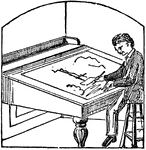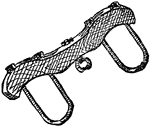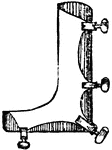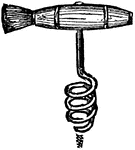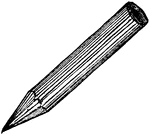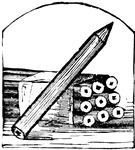
Romanesque Church
Line drawing of a large Romanesque church. The illustration is similar to the Imperial Cathedral Basilica…

Second Naval Battle
"Second naval battle in Hampton Roads- fight between the Federal ironclad Monitor, of two guns,…

Federal Prisoners
"Federal cavalry covering the escape of Federal prisoners from Libby Prison, Richmond, Va. The feeling…

Falling Waters
"Gallant charge of the Sixth Michigan cavalry over the enemy's breastworks, near falling Waters, Md.,…
War in Texas
"The War in Texas. Brownsville, occupied by the army under Major General N. P. Banks, in 1863. The sudden…
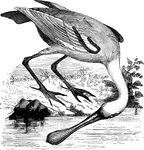
Roseate Spoonbill
Drawing its name from the widing of its bill towards the tip, the spoonbill frequents coastal and marshy…
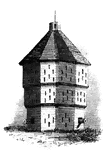
Fort Plain
Fort Plain block-house. There is considerable confusion in the accounts concerning Fort Plain, for which…
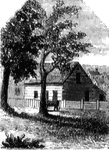
Red House
The Red House. The "Red House" is situated upon the street in Wilkesbarre next the river, and about…

Floating Battery
"American Floating Battery. I am indebted to the kindness of Peter Force, Esq., of Washington city (editor…

Society of the Cincinnati
"Society of the Cincinnati, member's certificate. This engraving is a fac simile of a certificate, about…

Walnut Street Prison
"The Walnut Street Prison. This edifice was erected in 1774, and taken down in 1836. The beautiful new…
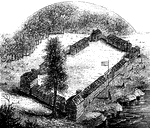
Boone's Fort
"Boone's Fort. This sketch is from a drawing by Colonel Henderson, and published in Collin's Historical…
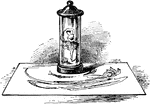
Anamorphoscope
"An optical toy consisting of a vertical cylindrical mirror which gives a correct image of a distorted…

Anamorphosis
"A method of drawing which gives a distorted image of the object represented when it is viewed from…

Abacus
An abacus is denoted primarily a square tablet of any description, and was hence employed in the following…
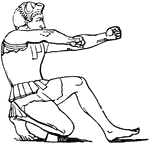
Arcus
"The bow used for shooting arrows, is one of the most ancient of all weapons, but is characteristic…
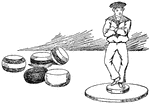
Jack's Alive
A game which consits of figure of a sailor cast in metal and a number of colored balls, and three drawing-pins.
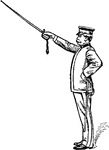
Drawn Saber
"When publishing orderes, calling the roll, etc., the saber is held suspended from the right wrist by…

Faucet
A fixture for drawing liquor from a cask or vessel, consisting of a tube stoped with a peg, spigot,…
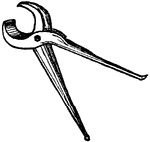
Pincers
An instrument for various uses, as drawing nails and the like, griping things to be held fast, etc.;…
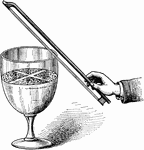
Hand with bow and glass
A hand drawing a violin-bow across the edge of a goblet half-filled with water.

Tantalus, Sisyphus, and Ixion
"As he sang these tender strains, the very ghosts shed tears. Tantalus, in spite of his thirst, stopped…

Cravat bow
"Plait the ribbon a distance from the end to allow for a streamer or bow end. Hold the plaits with the…
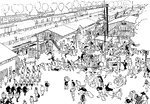
Ruhleben Prison Camp
"A prophetic birds eye view of Ruhleben Prison Camp when the war ends."-1916; Drawing by Hobart Egremont,…

Siphon
A bent tube with limbs of unequal length, used for drawing liquids from one vessel into another.

Jointed Rock
This illustration shows a jointed structure. In this drawing, there are two systems of joints or divisional…

Triumph of Columbus
The Triumph of Columbus. A fac-simile of the original sketch by Columbus himsef, was sent by him from…

Tiahuanacu Image
Enlarged drawing of the bas-relief on the broken doorway. Details that show Tiahuanacu existed.

Black Scale
A drawing of the newly hatched larva, viewed from beneath, with enlargements of anal extremity viewed…

Compasses
"The compasses, next to the T square and triangles, are used more than any other instrument. A pencil…
Compasses
"The compasses, next to the T square and triangles, are used more than any other instrument. A pencil…
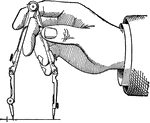
Compasses
"The compasses, next to the T square and triangles, are used more than any other instrument. A pencil…
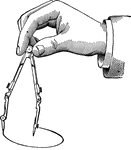
Compasses
"The compasses, next to the T square and triangles, are used more than any other instrument. A pencil…
Compasses
"The compasses, next to the T square and triangles, are used more than any other instrument. A pencil…
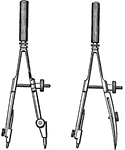
Compasses
"The compasses, next to the T square and triangles, are used more than any other instrument. A pencil…
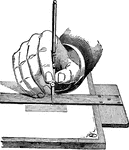
Ruling Pen
"For drawing ink lines other than arcs of circles, the ruling pen is used. It should be held as nearly…

Ruling Pen
"For drawing ink lines other than arcs of circles, the ruling pen is used. It should be held as nearly…
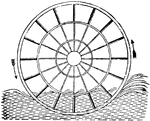
Ordinary Paddle-wheel
"The usual form of paddle-wheel, that is called the radial, in which the floats are fixed. It will be…

Slubbing Frame
"The operation which succeeds that of the drawing frame is slubbing, where the sliver has a certain…

Throstle
"The spinning frame, or throstle, is made with two sets of drawing rollers, one on each side. Between…
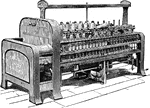
Throstle
"The spinning frame, or throstle, is made with two sets of drawing rollers, one on each side. Between…

Aurelia Aurita
"Tentaculocyst and marginal lappets of Aurelia aurita. In the lefthand figure-ML, marginal lappets;…
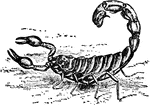
Scorpion
"Drawing from life of the desert scorpion, Buthusaustralis." — The Encyclopedia Britannica, 1910

Scorpion
"Drawing from tlife of the Italian scorpion Euscorpius italicus, Herbst, holding a blue-bottle fly with…

Cup-adjusting Hub
"One end of the cup-adjusting hub, with inward bearings. The cones are formed of one piece with the…
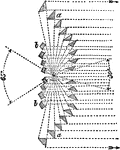
Swans Designs
"Professor Swan's Designs.—Among several ingenious arrangements and new forms of agents proposed by…
Ruling Pen
A form of pen used for drawing lines of even thickness. It commonly consists of two blades which hold…
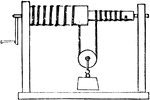
Windlass
"Windlass.—The common windlass for drawing water is another modification of the wheel and axle.…


